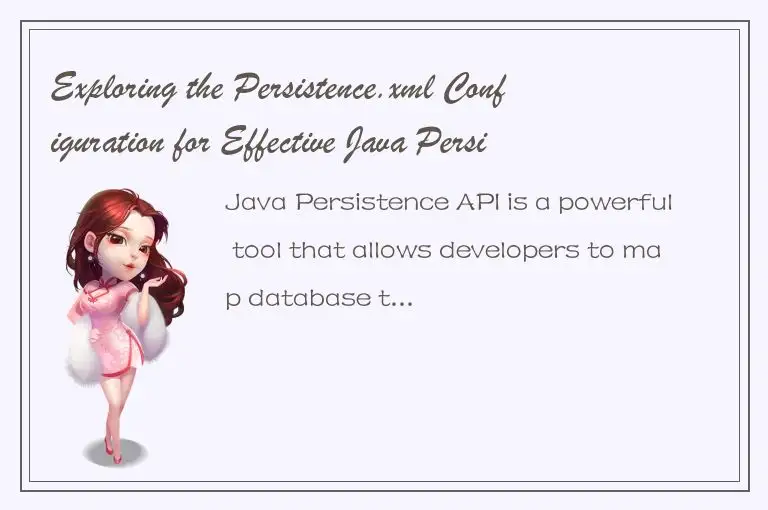Java Persistence API is a powerful tool that allows developers to map database tables to Java classes, thus simplifying the process of interacting with databases. One of the key components of JPA is the persistence.xml file, which contains important configuration information for the application's persistence context.

In this article, we will explore the various settings that can be configured in persistence.xml for effective Java persistence.
What is persistence.xml?
Persistence.xml is a configuration file that provides information to JPA about how to connect to the database and how to map Java classes to database tables. It is located in the META-INF folder of the application's classpath and must be included in the application's deployment package.
The persistence.xml file contains several elements, the most important of which are the persistence-unit and the provider. The persistence-unit is a logical grouping of related entities and defines the connection to the database. The provider element specifies the JPA implementation being used, such as Hibernate or EclipseLink.
Configuring DATABASE Connection
The database connection settings are specified in the persistence-unit element. JPA supports several types of database connections, including JDBC, JNDI, and non-Java data sources.
To configure a JDBC connection, we need to specify the driver class, database URL, username, and password. For example:
To configure a JNDI data source, we need to specify the JNDI name. For example:
To configure a non-Java data source, we need to specify the JNDI name and the provider class. For example:
Configuring JPA Properties
JPA properties are used to fine-tune the behavior of the JPA provider. They are specified using the property element inside the persistence-unit element.
Some common JPA properties are:
Hibernate dialect:
Maximum number of JDBC connections in the pool:
Show SQL statements:
Format SQL statements:
Note: The property names and values may vary depending on the JPA provider being used.
Configuring Entity Mapping
Entity mapping is the process of mapping Java classes to database tables. This is done using annotations or XML files. For annotations, we need to specify the package names containing the entity classes. For example:
For XML files, we need to specify the location of the mapping file. For example:
Configuring Caching
Caching is an important performance optimization technique in JPA. It reduces the number of database queries by keeping frequently accessed objects in memory.
JPA supports two types of caching: first-level and second-level. First-level caching is provided by the persistence context, which caches the objects retrieved from the database in memory. Second-level caching is provided by the JPA provider, which caches the objects across multiple transactions.
To configure first-level caching, we need to specify the cache mode in the persistence-unit element. For example:
To configure second-level caching, we need to specify the cache provider and its properties in the persistence-unit element. For example:
Conclusion
In this article, we have explored the various settings that can be configured in persistence.xml for effective Java persistence. We have covered the configuration of the database connection, JPA properties, entity mapping, and caching. It is important to understand these settings so that we can fine-tune the behavior of our JPA application for optimal performance.




 QQ客服专员
QQ客服专员 电话客服专员
电话客服专员